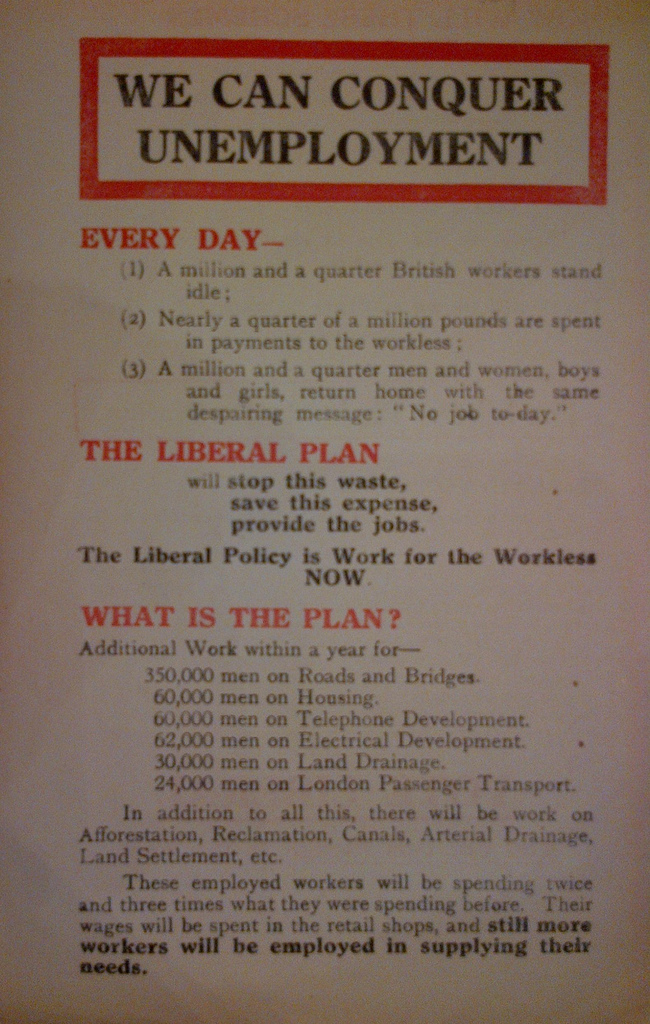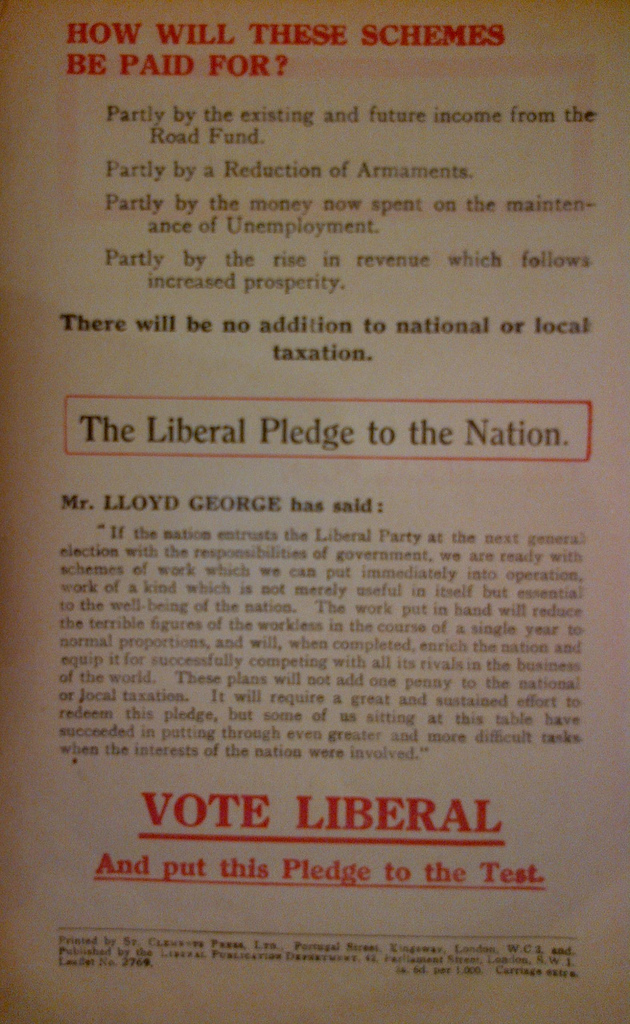How leaflets used to look: the 1929 Liberal economic plan
With the economy continuing to dominate politics, it is time to take another dip into my collection of old political leaflets and have a a look at how the Liberal Party of 1929 talked about the issue:


Large headings, big margins, limited but effective use of colour, plain English yet presenting an important issue and with a potentially complicated message. This is a well-written leaflet.
The two sentence explanation of the multiplier effect in the economy is a great example of how complicated issues do not require long, dull and obscurantist screeds:
As Mark Twain put it, “I didn’t have time to write a short letter so I wrote this long one.” Short and succinct isn’t dumbed down, it’s the opposite. It’s far harder to write clear, precise and brief text than it is to write long, imprecise and waffly pieces. So don’t confuse brevity with dumbing down. Unless of course you think Albert Einstein was a stupid, idiotic scientist for lazily using just using five characters (not even five whole words!) to try to explain complex science when he wrote e=mc2.
The leaflet may seem to fall foul of the curse I have often decried of thinking that a set of bullet points full of numbers makes for a powerful political message. But in fact there is a strong story to the leaflet: the evil stalking the land, the hero with an idea and the means by which it can happen. This is a case of using numbers to buttress a story, not as a substitute for the absence of one.
As with the 1930s Westminster leaflet I’ve blogged about before, the approach to good political messaging in this leaflet is a familiar one, even if the details of the execution immediately and clearly put it as a leaflet of another age. They both remind us that the basics of good political communication have not changed.
For some other historical comparisons between election campaigns then and now see my article Continuity and change in election campaigns: the 1910 and 2010 election campaigns.
Leave a Reply